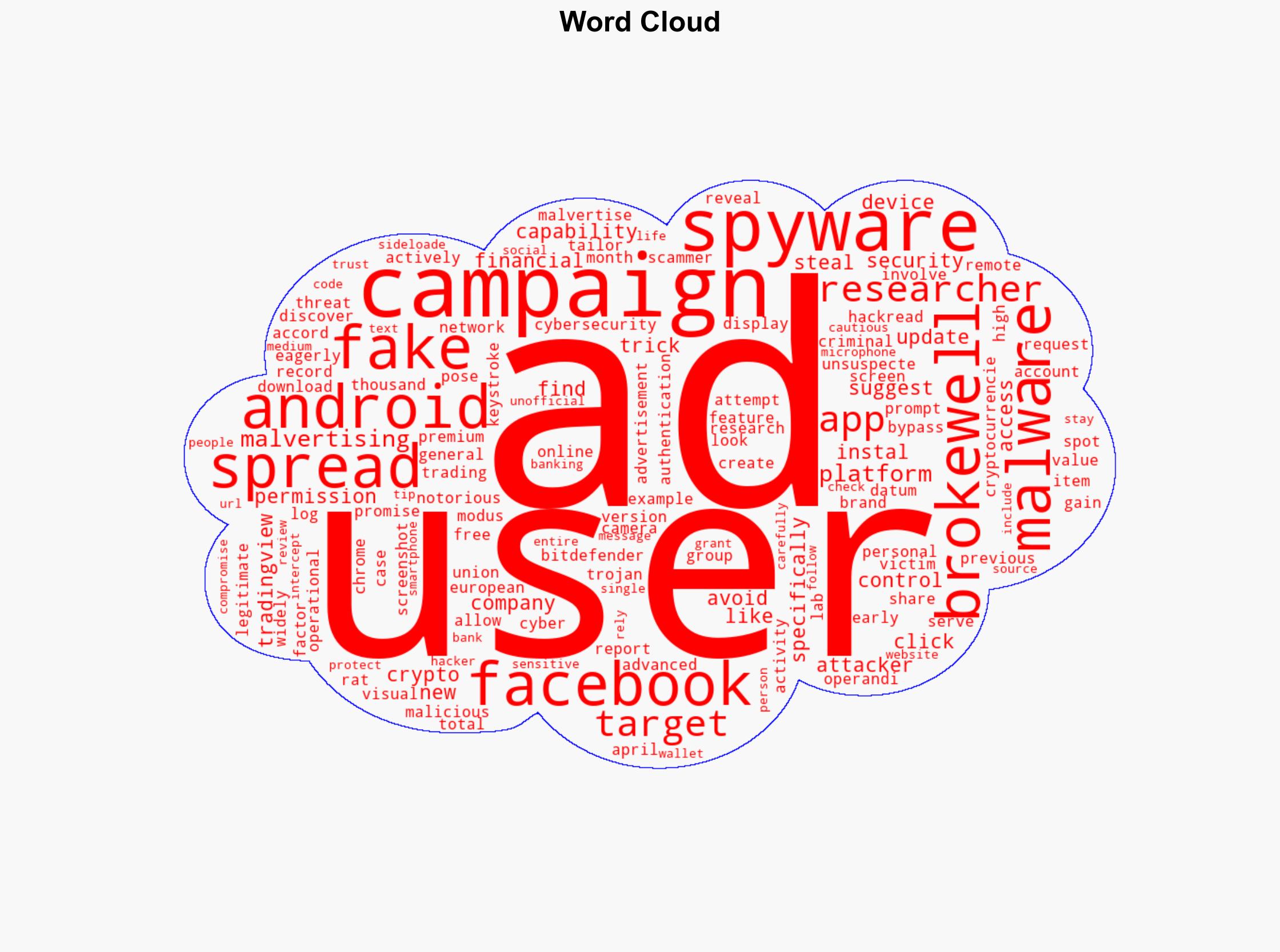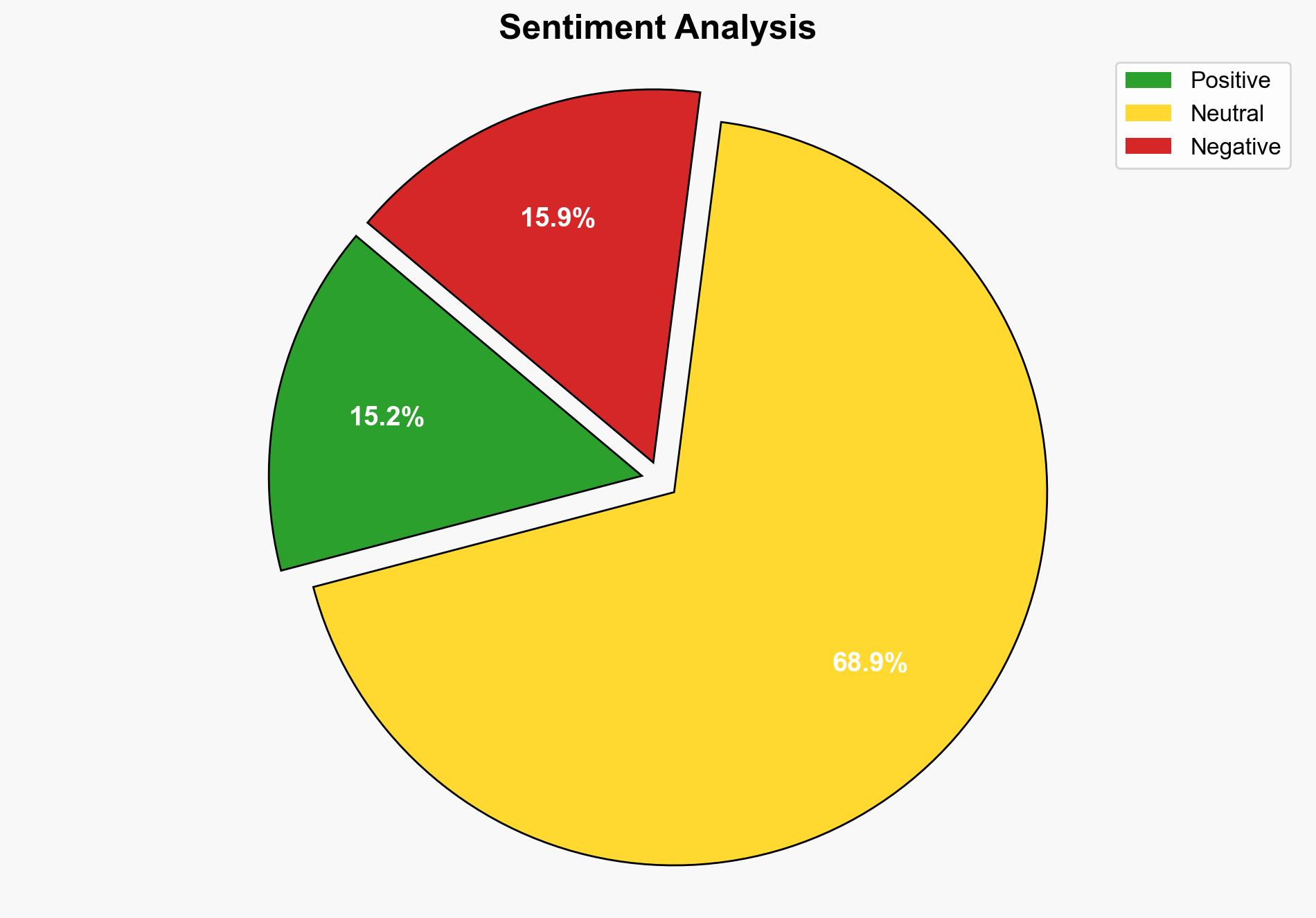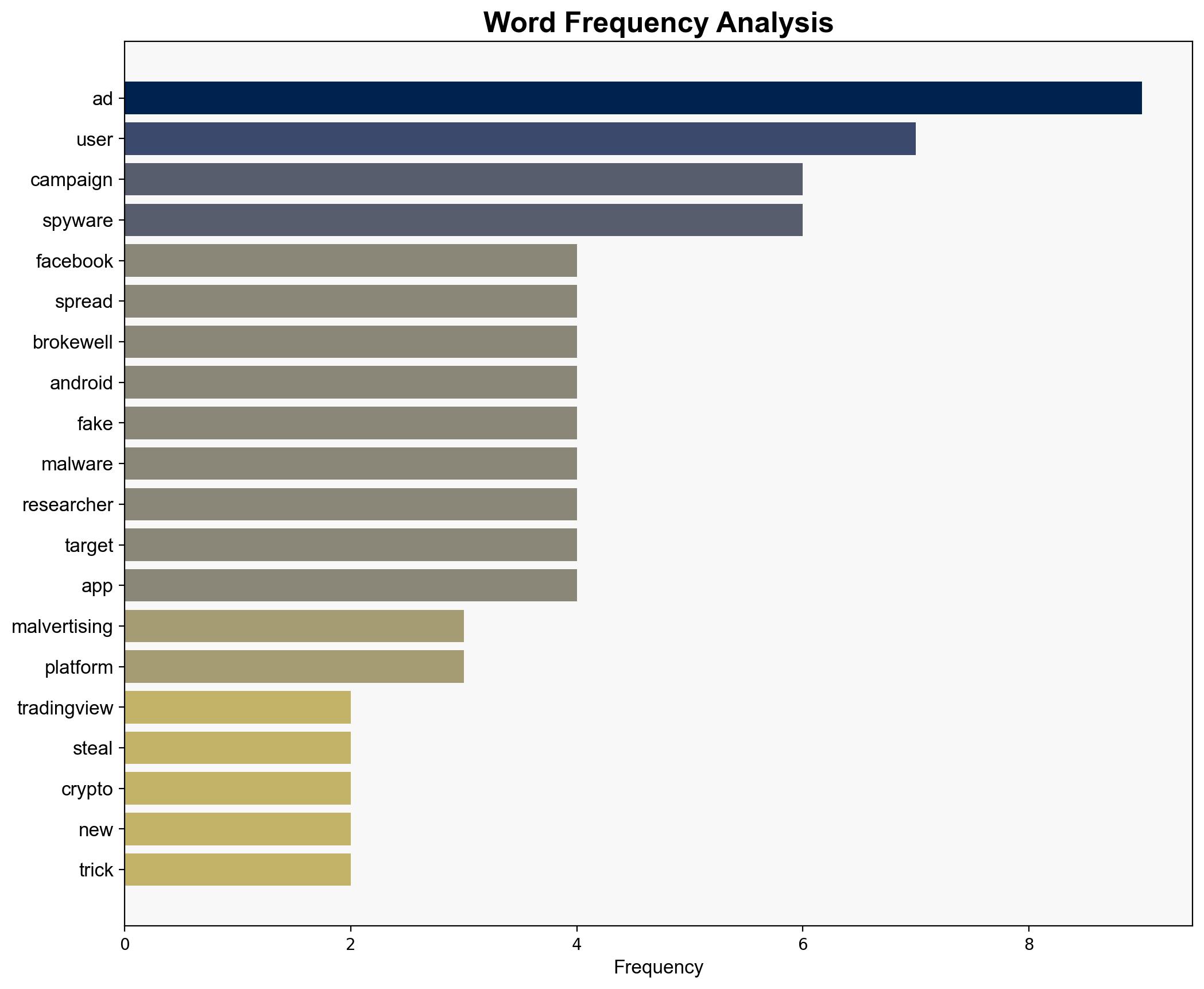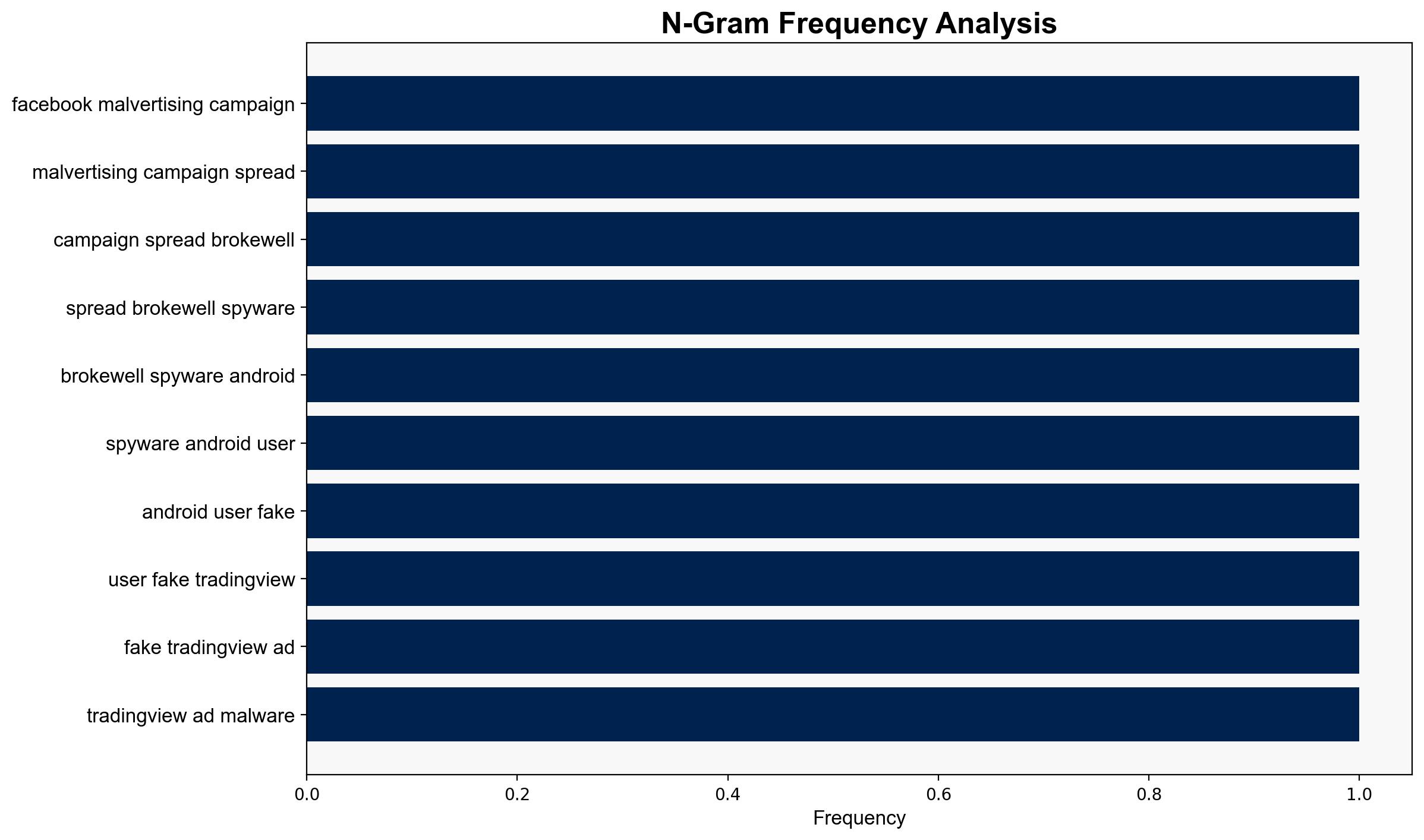Fake Facebook Ads Push Brokewell Spyware to Android Users – HackRead
Published on: 2025-08-29
Intelligence Report: Fake Facebook Ads Push Brokewell Spyware to Android Users – HackRead
1. BLUF (Bottom Line Up Front)
The Brokewell spyware campaign, leveraging fake Facebook ads, poses a significant cybersecurity threat to Android users, particularly in the European Union. The most supported hypothesis is that this campaign is a targeted effort by cybercriminals to exploit financial vulnerabilities via malvertising. Confidence in this assessment is moderate due to potential gaps in understanding the full scope and origin of the operation. Immediate action is recommended to enhance user awareness and strengthen cybersecurity defenses.
2. Competing Hypotheses
Hypothesis 1: The Brokewell spyware campaign is a sophisticated, targeted operation by organized cybercriminal groups aiming to exploit financial vulnerabilities through malvertising on Facebook.
Hypothesis 2: The campaign is a broader, less targeted effort by opportunistic hackers using widely available tools to capitalize on unsuspecting Android users through fake ads.
Using the Analysis of Competing Hypotheses (ACH) 2.0, Hypothesis 1 is better supported due to the specific targeting of Android users and the advanced capabilities of the spyware, suggesting a higher level of organization and intent.
3. Key Assumptions and Red Flags
– Assumption: The campaign’s primary goal is financial theft rather than data collection or espionage.
– Red Flag: Lack of detailed information on the origin of the campaign and the identity of the perpetrators.
– Potential Cognitive Bias: Confirmation bias may lead analysts to overemphasize the financial aspect without considering other motives.
– Missing Data: Comprehensive data on the geographical spread and the total number of affected users is absent.
4. Implications and Strategic Risks
The campaign’s success could embolden similar operations, increasing the frequency and sophistication of malvertising attacks. Economically, widespread financial theft could undermine trust in digital financial platforms. Cybersecurity-wise, the campaign highlights vulnerabilities in social media ad networks. Geopolitically, if state actors are involved, it could escalate into broader cyber conflicts. Psychologically, user trust in online platforms may diminish, impacting social media engagement and digital commerce.
5. Recommendations and Outlook
- Enhance public awareness campaigns to educate users on identifying and avoiding malvertising threats.
- Strengthen collaboration between social media platforms and cybersecurity firms to detect and neutralize malicious ads swiftly.
- Encourage the development of more robust security features in Android devices to prevent unauthorized access.
- Scenario Projections:
- Best Case: Increased awareness and improved security measures significantly reduce the impact of such campaigns.
- Worst Case: The campaign evolves into a widespread cybercrime wave, severely impacting financial systems.
- Most Likely: Continued sporadic attacks with moderate impact, prompting gradual improvements in cybersecurity protocols.
6. Key Individuals and Entities
– Bitdefender Lab (cybersecurity researchers)
– Facebook (platform used for malvertising)
– TradingView (brand impersonated in fake ads)
7. Thematic Tags
national security threats, cybersecurity, counter-terrorism, regional focus





